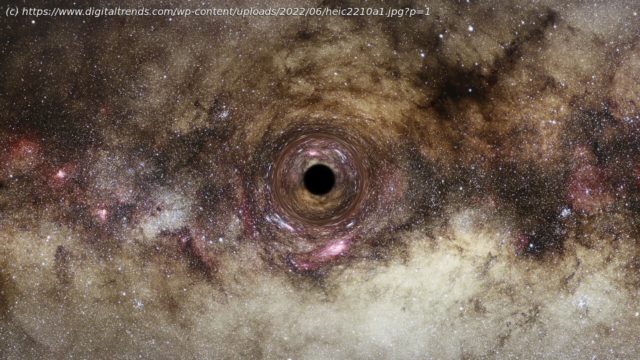Out in the depths of our galaxy roam lonely monsters: Isolated black holes which drift through space unattached to stars or other black holes.
Out in the depths of our galaxy roam lonely monsters: Isolated black holes which drift through space unattached to stars or other black holes. Though astronomers know that up to 100 million of these black holes exist in the Milky Way, they are exceedingly hard to spot. But now, data from the Hubble Space Telescope has been used to identify one of these lonely wanderers for the first time. Located 5,00 light-years away in a spiral arm of the Milky Way called Carina-Sagittarius, the black hole was spotted by looking at the way it warps the light coming from stars behind it. As black holes don’t emit any light themselves, their presence has to be inferred from seeing their effects such as the way their gravity bends light from other sources. Most black holes are spotted either as part of a binary system, in which a black hole and a star orbit around each other, or in the busy central regions of galaxies.






